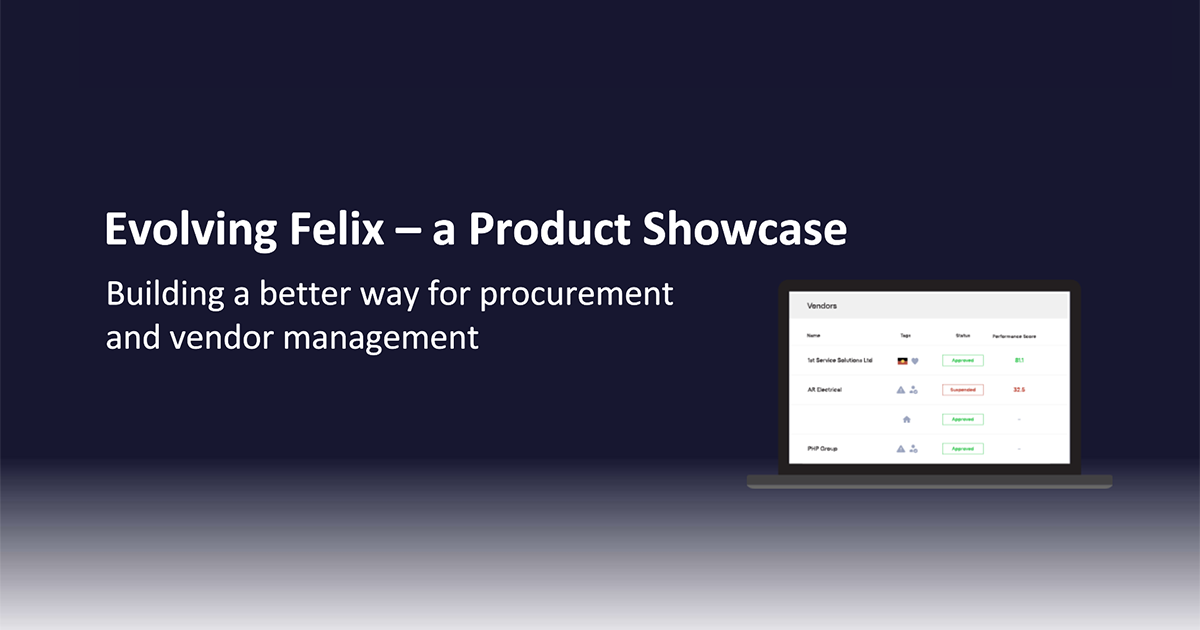We have seen many technological advances in the past few decades amid the “Industry 4.0” evolution, including the rise of digital transformation in many business areas, such as procurement and supply chain. However, there are still challenges in realising the full potential of procurement technology due to internal complexity, namely:
- “Dirty” data
- Poor integration across different systems or applications
The surveyed CPOs in Deloitte’s 2019 global study cites the above as the top barriers with 57% and 29% respectively. Anecdotal evidence from our clients over the years has also pointed to the same challenges preventing them from getting the most value out of their technology investments.

Let’s dive into each barrier and explore where the real pain is.
Quality and availability of data
So much has been said about how data is the “new oil.” But not all data is created equal. When it comes to managing third parties in the supply chain, quality of data is crucial.
And yet the fragmented data landscape across organisations is slowly eroding the value of supplier management. You have supplier data in your ERP system, AP software, spreadsheets, emails, or even on someone’s local hard drive. That means there are issues such as:
- No standardisation: different data formats, structures etc.
- Validity and accuracy: incorrect, incomplete, out-of-date information
Closely related is the issue of data availability, i.e.do we even collect it in the first place? Information about vendor past performance, attributes such as whether they are a social enterprise, Indigenous owned and so on, are often not captured, or captured in an ad-hoc manner.
When there is no (or inadequate) supplier segmentation due to a lack of data, organisations use an undifferentiated approach to treat their suppliers, which opens themselves up to risks and inefficiency.
Ultimately, the result is no single source of truth to make informed decisions, especially for strategic sourcing initiatives
> Action point: Take a long hard look at your existing supplier data: How much of it is usable? Does the cost of keeping and maintaining it outweigh the benefits?
Interested in how to build a business case for digital transformation? Our webinar can help you.
Poor integration across systems or applications
When different systems don’t talk to one another, it can result in the fragmented data landscape mentioned above, as well as inefficiency and error-prone workarounds.
From a technological angle
One might ask, “If I buy a suite of solutions from the same vendor, why would I run into this problem?”
The general impression is that if you buy a single suite for digital procurement, you will get a seamless experience across the different products as they are technically supposed to be integrated.
However, the nature of how suite vendors grow within solutions markets – by acquiring independent software vendors – can cause integration issues.
As the “frankensuites” emerge from different software products with different data models being joined, it would take time for the integration to be seamless.
This can be a slow process if the parent system is big and clunky, or already dealing with previous mergers. Adding to the complexity is when software updates need to be rolled out across the board, and it can feel like using pieces of software from two different companies. Buyers might end up with a package of modules that have uneven quality.
On the contrary, with the growing popularity of out-of-the box integrations (via APIs), specialist solutions once blamed for the fragmented enterprise IT architecture, can offer data sharing with other systems. This means organisations can multi-source their procurement software without worrying about the cross-solution integration challenge. At least not like it used to be.

From a practical angle
In practice, supplier relationship management is often disconnected from sourcing. This might not be a technology issue per se. Factors such as processes and people are also at play.
(You can read more about the interplay between these 3 factors in our previous blog post on procurement governance)
For argument’s sake, let’s assume the organisation has worked out things like category strategy, procurement plan and procedures. But when it comes to the implementation of those, there is a disconnection between sourcing and supplier management tools (due to poor integration as above).
The consequences are:
- Lack of data visibility across different third-party risk management stakeholders, e.g. procurement, legal, engineering etc.
- Important decisions made in silos, increasing risk exposure
- Supplier disengagement: time could be spent on value-add activities instead of repetitive data entry across different tools
> Action point: Have an internal conversation with all the stakeholders who need access to your supplier data and their requirements. Then have a conversation with your potential/existing procurement software vendors about these. It’s best to not assume seamless integration by virtue of buying a procurement solution suite.
---
Continue reading part 2 of the series here. Or if you’d like to discuss how to make the most of your procurement technology solution, feel free to reach out.

Related Articles

Webinar recap: Product Showcase February 2023
At Felix, our product and roadmap are driven by user feedback and market need. We’re continually evolving our platform to help solve customer problems and build a better way.
The Felix Product Team invest a lot of time and energy into talking to customers to better understand what obstacles they face in their day-to-day roles to further enhance Felix to make work-life easier.

Project procurement vs. Category management for principal contractors
Procurement and supply chain management can be incredibly complex and critical for project success, especially in construction – where there are layers of subcontracting parties.

Getting buy-in for procurement software: The Stakeholder playbook
Our previous post taking inspiration from the Ever Given saga, touched on some tips to build a business case for procurement software. No matter what job title you have, chances are you’ve already known you need a solution, now it’s just a matter of convincing others to share your vision.
Let's stay in touch
Get the monthly dose of supply chain, procurement and technology insights with the Felix newsletter.



